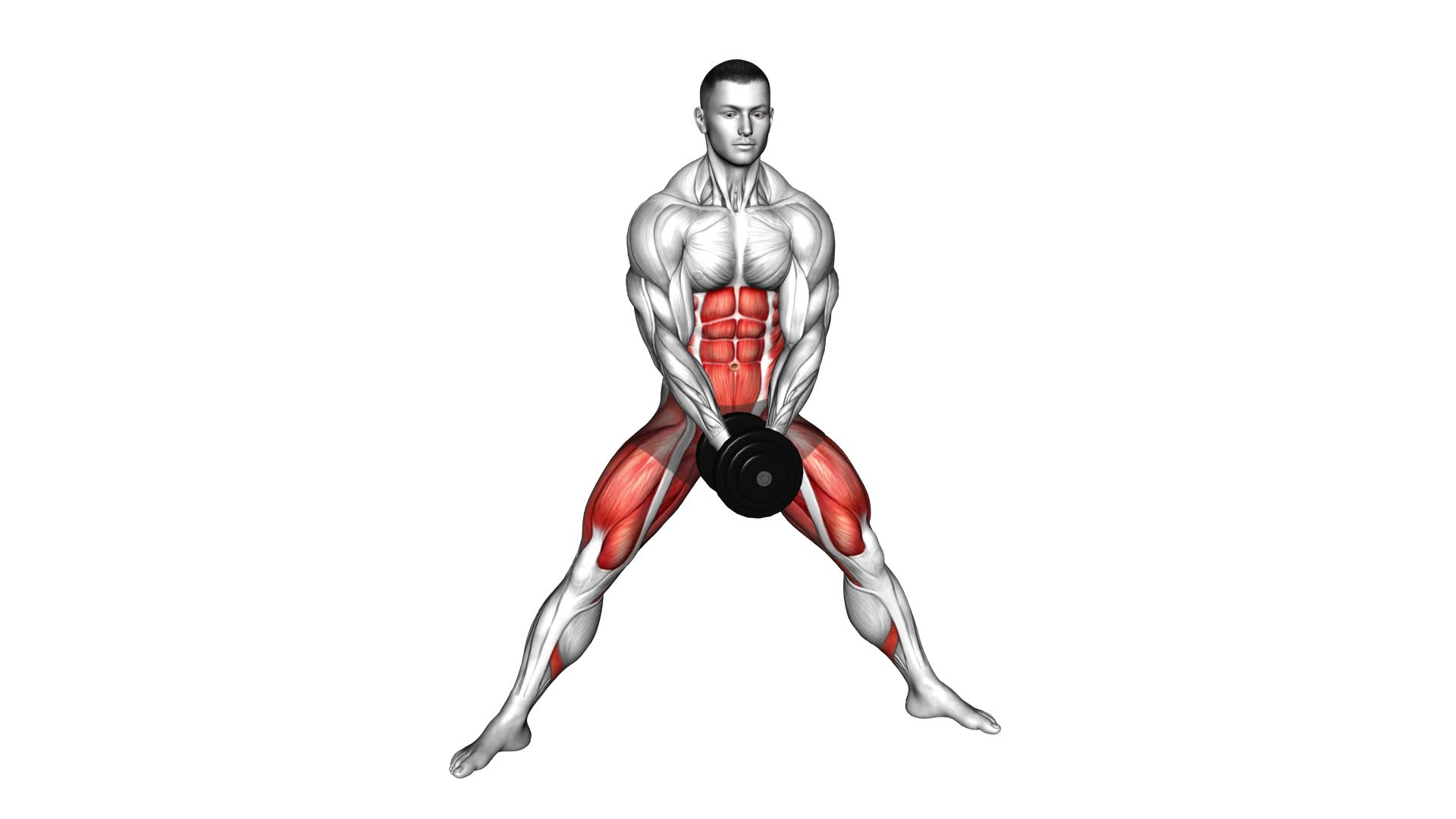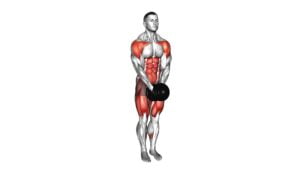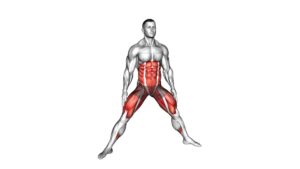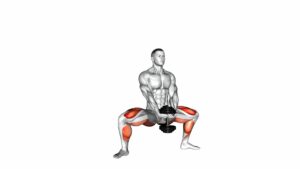Dumbbell Change Plyo Side Lunge (male) – Video Exercise Guide & Tips

Are you looking for a challenging lower body exercise that can help you build strength and improve your agility? Look no further than the Dumbbell Change Plyo Side Lunge!
Watch This Exercise Video
This dynamic exercise targets your glutes, quads, and hamstrings while also engaging your core.
In this video exercise guide, we'll show you the proper form and technique, tips for choosing the right dumbbell weight, modifications, and variations to keep you challenged.
Get ready to take your leg workout to the next level!
Key Takeaways
- The Dumbbell Change Plyo Side Lunge targets glutes, quads, and hamstrings.
- It improves balance, agility, and explosive power.
- It can be effective for both strength and cardiovascular conditioning.
- Proper form and technique, as well as gradually increasing weight, are important to prevent injuries and maximize results.
Benefits of the Dumbbell Change Plyo Side Lunge
You can experience multiple benefits from incorporating the dumbbell change plyo side lunge into your workout routine. This exercise not only targets your lower body, but also helps improve your balance, agility, and explosive power. By adding variations of side lunges to your routine, you can target different muscles in your legs, such as your quadriceps, hamstrings, glutes, and adductors.
Incorporating plyometric exercises, like the dumbbell change plyo side lunge, into your workout routine can enhance your overall fitness level. Plyometric exercises involve explosive movements that help improve your strength, speed, and power. By incorporating plyometrics, you can boost your athletic performance and increase your ability to generate force.
Adding the dumbbell change plyo side lunge to your routine not only provides the benefits of traditional side lunges, but also adds a plyometric element to further challenge your muscles. This exercise requires you to explosively push off the ground while switching the dumbbell from one hand to the other. The combination of the side lunge and plyometric movement engages multiple muscle groups and elevates your heart rate, making it an effective exercise for both strength and cardiovascular conditioning.
Now, let's move on to the subsequent section about the proper form and technique for the dumbbell change plyo side lunge.
Proper Form and Technique for the Dumbbell Change Plyo Side Lunge
To perform the dumbbell change plyo side lunge with proper form and technique, focus on maintaining a stable core and explosive movements throughout the exercise. This exercise is great for targeting the lower body, specifically the glutes, quadriceps, and hamstrings.
When performing the dumbbell change plyo side lunge, it's important to avoid common mistakes that can lead to injuries. One common mistake isn't maintaining proper alignment. Make sure to keep your chest up, shoulders back, and knees in line with your toes. This will help prevent strain on your joints and reduce the risk of injury.
Another common mistake is using too much weight. It's important to start with lighter weights and gradually increase the resistance as you become more comfortable with the exercise. Using excessive weight can compromise your form and increase the likelihood of injury.
Speaking of injuries, there are a few common ones associated with the dumbbell change plyo side lunge. One is knee pain, which can be caused by improper alignment or excessive stress on the joint. Another is lower back strain, which can occur if you're not engaging your core properly or using too much weight.
To prevent these injuries, focus on maintaining proper form and technique throughout the exercise. Remember to engage your core, keep your chest up, and use controlled, explosive movements. By following these tips, you can perform the dumbbell change plyo side lunge safely and effectively.
How to Choose the Right Dumbbell Weight for This Exercise
When selecting the appropriate dumbbell weight for this exercise, it's recommended to choose a weight that challenges your muscles without compromising your form. This exercise, the Dumbbell Change Plyo Side Lunge, requires a combination of strength and stability. To get the most out of this exercise, you want to choose a weight that allows you to perform the movement with proper technique and control.
For beginners, it's advisable to start with a lighter weight, such as 5 to 10 pounds, and focus on mastering the movement before increasing the weight. As you become more comfortable and proficient with the exercise, you can gradually increase the dumbbell weight to continue challenging your muscles.
To progress in dumbbell weight for this exercise, you can increase the weight by increments of 2 to 5 pounds as you feel stronger and more confident. It's important to listen to your body and not push yourself too hard too soon. Gradual progression will help prevent injury and ensure that you're able to maintain proper form throughout the exercise.
Modifications and Variations for the Dumbbell Change Plyo Side Lunge
One modification for the Dumbbell Change Plyo Side Lunge is to perform the exercise without weights. This modification is helpful for beginners or individuals who aren't yet comfortable with adding weights to their workout routine. By removing the dumbbells, you can focus on mastering the proper form and technique of the exercise before progressing to using weights.
Another modification is to decrease the range of motion. Instead of lunging deeply to the side, you can perform a smaller side step and lunge. This modification can be useful for individuals with limited mobility or those who are recovering from an injury. Gradually increase the range of motion as your strength and flexibility improve.
To progress the exercise and make it more challenging, you can increase the weight of the dumbbells. By gradually increasing the weight, you can continue to challenge your muscles and promote further strength gains. Additionally, you can add a jump to the exercise to increase the intensity and incorporate more plyometric movements.
Remember to always listen to your body and choose modifications or progressions that suit your fitness level and goals. Consult with a fitness professional if you have any concerns or questions about modifying or progressing the Dumbbell Change Plyo Side Lunge.
Tips for Maximizing Your Results With the Dumbbell Change Plyo Side Lunge
To optimize your results with the Dumbbell Change Plyo Side Lunge, focus on incorporating proper form and engaging your muscles throughout the exercise. This will help you maximize the effectiveness of each repetition and prevent injuries.
One common mistake to avoid is allowing your knee to move past your toes during the lunge. This puts excessive strain on your knee joint and can lead to discomfort or injury. Instead, focus on pushing your hips back and keeping your weight in your heels to maintain stability and protect your knees.
Another mistake isn't fully extending your leg during the jump. Make sure to explosively push off the ground and fully extend your leg to engage your glutes and hamstrings.
For advanced variations, you can increase the weight of the dumbbells or incorporate jump variations, such as tuck jumps or split jumps. This will add an extra challenge and help you build strength and power.
Remember to listen to your body and start with a weight and intensity level that's appropriate for your fitness level.
Frequently Asked Questions
How Many Calories Does the Dumbbell Change Plyo Side Lunge Burn?
The dumbbell change plyo side lunge is a dynamic exercise that can help you burn calories and improve your overall fitness. By incorporating dumbbells into the exercise, you increase the intensity and engage more muscles.
The plyometric movement adds an explosive element, further challenging your body. The exact number of calories burned will vary depending on factors such as your weight, intensity, and duration of the exercise.
However, incorporating this exercise into your routine can contribute to caloric expenditure and provide variations to your workout.
Can the Dumbbell Change Plyo Side Lunge Help Improve Balance?
Yes, the dumbbell change plyo side lunge can help improve balance. By incorporating explosive movements and using dumbbells for added resistance, this exercise challenges your core stability and proprioception.
To modify the exercise, you can perform it without dumbbells or decrease the depth of your lunge.
Variations of the dumbbell change plyo side lunge include adding a twist or incorporating a hop at the end. These variations can further enhance your balance and coordination.
Is the Dumbbell Change Plyo Side Lunge Suitable for Beginners?
The dumbbell change plyo side lunge is a challenging exercise that can be modified to suit beginners. By incorporating plyometric exercises like this one into your routine, you can improve your balance, strength, and overall athleticism.
To make it more beginner-friendly, start without weights and focus on mastering the movement. As you become more comfortable, you can gradually add light dumbbells and increase the intensity. Remember to listen to your body and only progress at a pace that feels comfortable for you.
Can the Dumbbell Change Plyo Side Lunge Help Strengthen the Core?
The dumbbell change plyo side lunge is a great exercise for strengthening your core. By adding the plyometric element, you aren't only working your legs but also engaging your abdominal muscles.
This exercise targets your obliques, transverse abdominis, and rectus abdominis, helping to improve your overall core strength and stability.
Additionally, there are variations of the dumbbell change plyo side lunge that can further challenge your core muscles, such as adding a twist or using heavier weights.
Are There Any Potential Risks or Injuries Associated With the Dumbbell Change Plyo Side Lunge?
When performing the dumbbell change plyo side lunge, there are potential risks and injuries to be aware of. It's important to take precautions and use proper form to minimize the risk of injury.
Some common mistakes include using too much weight, not maintaining proper balance, or landing too hard on the lunging leg.
To prevent injury, start with lighter weights, focus on balance and control, and land softly on the lunging leg.
Conclusion
In conclusion, the dumbbell change plyo side lunge is a beneficial exercise for improving lower body strength and stability.
By following proper form and technique, choosing the appropriate dumbbell weight, and incorporating modifications and variations, you can maximize your results with this exercise.
Remember to always listen to your body and consult with a fitness professional if needed.
Keep pushing yourself and enjoy the benefits of this challenging yet rewarding exercise.

Author
Years ago, the spark of my life’s passion ignited in my mind the moment I stepped into the local gym for the first time. The inaugural bead of perspiration, the initial endeavor, the very first surge of endorphins, and a sense of pride that washed over me post-workout marked the beginning of my deep-seated interest in strength sports, fitness, and sports nutrition. This very curiosity blossomed rapidly into a profound fascination, propelling me to earn a Master’s degree in Physical Education from the Academy of Physical Education in Krakow, followed by a Sports Manager diploma from the Jagiellonian University. My journey of growth led me to gain more specialized qualifications, such as being a certified personal trainer with a focus on sports dietetics, a lifeguard, and an instructor for wellness and corrective gymnastics. Theoretical knowledge paired seamlessly with practical experience, reinforcing my belief that the transformation of individuals under my guidance was also a reflection of my personal growth. This belief holds true even today. Each day, I strive to push the boundaries and explore new realms. These realms gently elevate me to greater heights. The unique combination of passion for my field and the continuous quest for growth fuels my drive to break new ground.







